A plan for a good and long workout session can quickly turn sour with bad clothes. This usually results in the removal of soaked clothes from the body or battling with the sweat of past workouts.
Honestly, there’s much more to choosing activewear than the popular belief of trendy and fashionable clothing. This can be confirmed by a good gym clothing manufacturer.
The apparel might feel nice at first, but a little bit into working out, sometimes there will be a feeling of discomfort. Activewear shouldn’t just look great but perform as much as it appears, ensuring maximum comfortability and support. In this case, a decision on fabric is the centerpiece.
In this post, we’ve prepared a detailed guide on choosing the best activewear fabric that will benefit your customers and scale up your business.
Types of Fabrics for Sports Clothes
Below are the best materials for workout clothes with the description of their features, what they are best for, and when to wear them.
Nylon
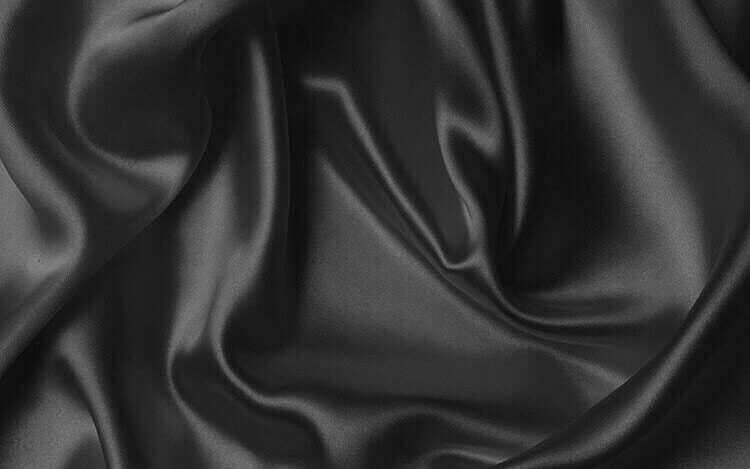
This is one of the most common athletic wear fabrics. It’s well-known for its use in pantyhose. Nylon is a soft, mildew-resistant, quick-drying, and stretchy material. It flexes effortlessly with every movement and returns to its pre-stretched shape and size without breakage. The fitness fabric is highly breathable and allows cool air to penetrate into the skin.
It can also wick away sweat from the skin and through the fabric to the outer layer where it evaporates. Thanks to its unique traits and its soft-as-silk feel, it’s found in almost every sportswear, ranging from tank tops, leggings, sports bras, T-shirts, and performance underwear.
Best for: All workouts and weather conditions. It is perfect for even the sweatiest of workouts.
Spandex
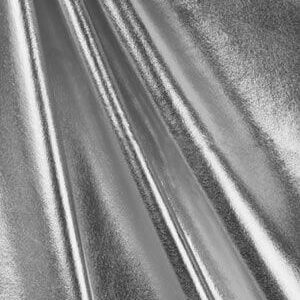
Other than the original name, it is also called by the brand name “Lycra.” Spandex is very flexible and stretchy, which is why it’s largely used as a weightlifting and yoga pants material, as well as in other workouts that require a wide range of motion. Spandex clothes are commonly in skin-tight apparel, such as tracks shorts, sports bras, leggings, boxer briefs, socks, and customizable compression shirts because of their superelastic qualities.
As a flexible fabric that can stretch as much as eight times its usual size and return to its original size, spandex permits unrestricted and comfortable movement in all patterns.
Best for: Workouts with a high range of movement, like yoga, pilates, and weightlifting.
Poly-Dri

Think of this as Polyester 2.0. Standard polyester is not so much appreciated as it traps bacteria and doesn’t repel odor very well. Poly-Dri, on the other hand, repels bacteria & odor and wicks more moisture. It is also durable and doesn’t wrinkle as fast as other workout fabrics.
This fabric is the workhorse of fitness apparel. It’s used in making almost all the activewear available in the store. Thanks to its tightly woven structure, it has the capability of protecting against UV rays. According to a blog published by Skin Cancer Foundation, it prevents the sun’s rays from hitting the skin.
Best for: Any type of workout and weather conditions.
Merino Wool
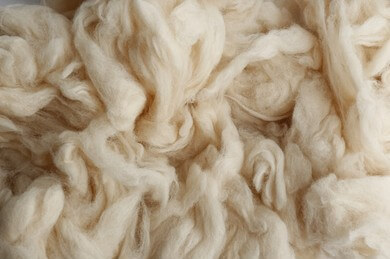
The popular belief is that wool is a cold-weather fabric that keeps the body warm. While this is true, wool is also a great warm-weather fabric. Merino wool in particular is a good sweat-wicker that’s thinner and softer than standard wool.
Merino wool performs a dual function. When it’s cold outside, the crimps in the fibers trap the warm air coming off the body. When it’s warm outside, the fiber wicks sweat away from the body and through the fabric.
It’s hard to find much activewear made of purely Merino wool. It’s mostly used with other fabrics like polyester for softness and breathability.
Best for: All outdoor workouts.
Polypropylene

Polypropylene is made from plastic and is totally water-resistant. It’s an outstanding fitness fabric that forces moisture to pass through its fibers, pushing out to the fabric’s surface for evaporation. Even after being sweaty at the completion of a long marathon, only the outside of the clothes will be wet. The inner side touching the skin will be completely dry.
Polypropylene is also very durable and resistant to wrinkles. It ensures a comfortable feel during and after a long, sweaty workout.
Best for: Extreme weather, such as high humidity, sleet, rain, and snow.
Bamboo

Bamboo pulp produces a natural fabric that’s light, breathable, and has an anti-static nature. This workout fabric is super soft, wicks away moisture, repels odors, and regulates body temperature. Like Merino wool, bamboo is often used with other fabrics.
One of the best attributes of bamboo fabric is that it’s environmentally sustainable and durable, ensuring that it’s worn severally without fading. Also, since it’s made of natural fibers, it is hypoallergenic, causing less skin irritation after sweating.
It’s a highly-rated fabric, making it more expensive than other popular options. However, it has a lot more benefits to offer than other fabrics.
Best for: All workouts and weather conditions.
Tencel

The name TENCEL was coined from Tenacity and Cellulose. It’s a natural fiber, offering anti-microbial benefits with a smooth finish. Similar to bamboo, TENCEL is obtained from sustainably sourced wood pulp. And the workout material is very close to polyester in structure, making it have a luxurious texture and super durable.
It’s not only breathable and biodegradable but also contains tiny fibrils that make the fabric capable of wicking sweat.
Best for: All workout activities and in any weather condition.
Moisture-wicking Cotton

Because cotton is considered to be incapable of wicking moisture, fitness experts and researchers created Moisture-wicking Cotton. It’s an alternative made from a cotton blend of synthetic fibers. While this fabric does help to absorb sweat more and doesn’t cause hotness, it is advisable to wear it sparingly, especially if higher temperatures are forecasted.
This fitness fabric is perfect activewear that can be worn daily for activities that won’t result in a lot of sweat.
Best for: Regular intensity workouts in cool-weather environments.
Why You Should Choose the Right Workout Clothing Fabrics
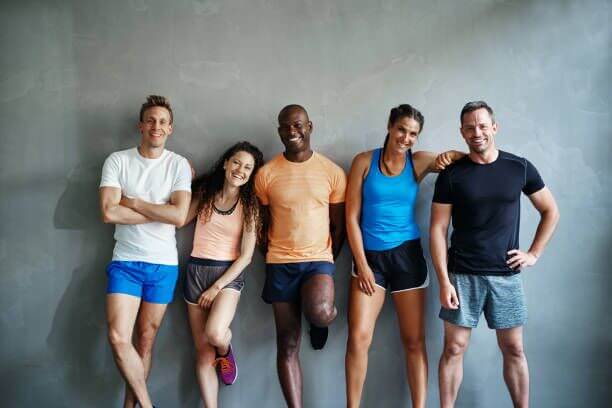
One of the major reasons for choosing the right fabric for sports clothes is comfort. Workouts are sometimes strenuous and demanding. And tight clothes will make the matter worse because there will be discomfort resulting from hotness and sweat. This will hinder the performance of long-range motions. With the right sports microfiber fabric, comfortability is guaranteed as the fabric will wick away sweat and allow the inflow of air.
Choosing the right activewear fabric isn’t just about considering the breathability or moisture-wicking capability, oftentimes, it’s a matter of safety. Breathable fabrics are great and should be chosen over thick materials that will prevent air from touching the skin.
However, how safe is the fabric? A user shouldn’t have to be overly conscious of not getting injured or a lady having her boobs falling out of a sports bra.
In addition, aside from the physical effect of workout clothing, there is also some sort of psychological effects on performance. When clothes that create a feeling of comfort, safety, and happiness are worn, the user experiences something called “enclothed cognition.” With the feeling derived from a good sportswear fabric, subconscious behaviors can be changed, leading to better workout performances and other positive effects.
Factors to Look for When Choosing Workout Clothing Fabric

Some people are more concerned about looking good as they work out, so they choose fashionable trendy clothes. While there’s no fault in this, sometimes that decision could go wrong. The major factors that should determine the workout clothing selected are comfort, fit, and safety rather than being on-trend or appearing attractive.
As earlier mentioned, when working out, the clothing worn tells on the performance. So, it’s best to go for clothes that are technically made to support the exercise. This is because there are special sets of apparel made for different sports, such as golfing, cycling, tennis, swimming, etc. For instance, in doing yoga or weightlifting, choose activewear (learn: Athleisure VS Activewear: Choose a Style) that allows long-range movement.
In general, however, it’s best to choose workout clothing that possesses outstanding properties, which will be discussed in the next sets of paragraphs.
Extension
A non-negotiable trait that must be exhibited during workouts is flexibility. The ability to perform different types of motions and move freely propels the wearer to hit the mark and set new records.
Stretchable sportswear fabrics improve mobility, posture, and one’s natural silhouette. A good example of extensive activewear that encourages flexibility is compression leggings. They are often used for yoga as they allow the wearer to move freely in all motions.
On the other hand, wearing an overly tight sports bra might hinder proper breathing. But a high-impact sports bra with good support allows free breath and movement.
Moisture-wicking
The absorbency and moisture-wicking capabilities of athletic wear fabrics are great determinants in deciding the best option. With these characteristics, the wearer can continue with his/her exercise even after a long time without worrying about perspiration.
With the right fabric for sports clothes, the user will be able to perform long hours of activities like dancing, marathon races, etc., comfortably. The fabric absorbs sweat, leaving him or her dry and able to carry on.
Breathability
During workouts, sweat is inevitable, hence sufficient air is needed. On this note, thick sportswear fabrics are not encouraged because there will be little to no space for air to penetrate.
Choosing a breathable workout material ensures that the wearer remains cool, dry, and comfortable throughout. Air will effortlessly flow in and dry the sweaty cloth. This also helps to reduce the growth of bacteria on workout clothing.
Quick-drying
Aside from thick fabrics not being the best material for workout clothes because of perspiration, intense workout sessions also cause a lot of sweat. For better comfort and support for all kinds of workouts, it’s best to use light fabrics like nylon that dry quickly, so that there won’t be irritation of any sort as sweat remains on the cloth.
Durability
One major factor to be considered is the durability of the fitness fabric. Even though it’s best to use light fabric, ensure that it has a long lifespan. Choose a sportswear fabric that guarantees multiple uses without compromising on quality.
Activewear made of the right fabric is less likely to tear and wear quickly. No matter how it’s stretched or stressed, it will last long.
Lightweight
Fabric weight is a major factor that contributes to sports performance, especially endurance sports. Oftentimes, coaches scrutinize the sportswear clothing to ensure that they are suitable and won’t contribute additional weight, thereby hindering top performance.
Washability & Color-Fast
Activewear should ideally be washable and easy to clean. It should be easy to wash off dirt, sweat, and any unpleasant odor from the exercise fabric. Also, check to confirm that the activewear can shrink back to its original size after being laundered. In addition, note that not all fabrics can be washed the same way, so check for the best way to wash the workout material.
When a fabric is color-fast, it won’t bleed or fade no matter how damp or wet it gets from sweat, water, or rain. With the fitness fabric being like this, it will last longer and retain all its other properties.
Thermal Insulation
Sportswear fabrics that have good thermal conductivity make poor insulators, so they are cooler to wear. These are perfect for several sports where strenuous movements heat the body, leading to profuse sweating. For winter sports like skiing and ice skating, such fabrics that trap more still air will keep the wearer warmer.
Water Vapor Transmission
Fabrics that are waterproof and permeable have a quality known as water vapor transmission. While allowing moisture from perspiration to escape, these fabrics will keep wind and rain from entering. This feature is important for activewear designed specifically for trail running, cycling, kayaking, and other outdoor activities.
Improper Workout Clothing Fabrics
Just as there are the best fabrics for sports clothes, there are gym clothing to avoid. Out of all the common fabrics, 100% cotton and standard polyester are the worst when it comes to trapping sweat. Though these materials may look beautiful and harmless to the naked eye, they are not very good at moisture-wicking.
100% Cotton
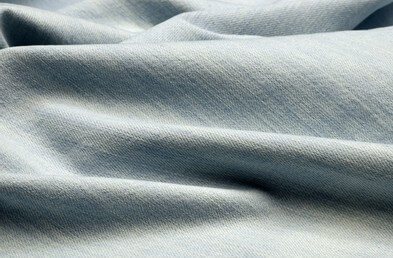
Cotton is a very bad fabric for workouts as it doesn’t wick away sweat quickly. It is only suitable for mild workouts that won’t make the wearer break a sweat. Cotton is extremely absorbent. When the wearer begins to sweat, the clothes will become heavy and damp, hence contributing to his/her body weight and making him or her uncomfortable to continue with the exercise.
For those who sweat a lot during exercise in a hot environment, they will feel like they’re wearing a wet towel, which can cause skin irritation.
Standard Polyester
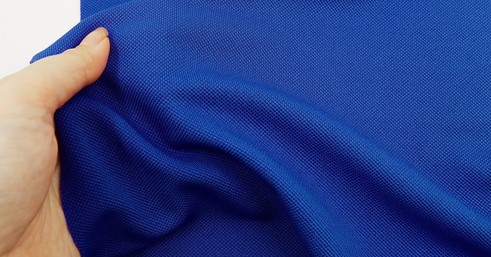
Although polyester is an artificial fiber, it is a more suitable environment for bacteria than natural fibers like linen and cotton. What this means is that it must be washed thoroughly immediately after every workout session to prevent the development of any bad odor.
If allowed to foster, this will grow stronger and stronger because it is the bacteria in the sweat that causes the stink and not the sweat. Also, polyester doesn’t dry quickly, causing the cloth to stink if not thoroughly washed.
Fabrics Quality Testing Methods
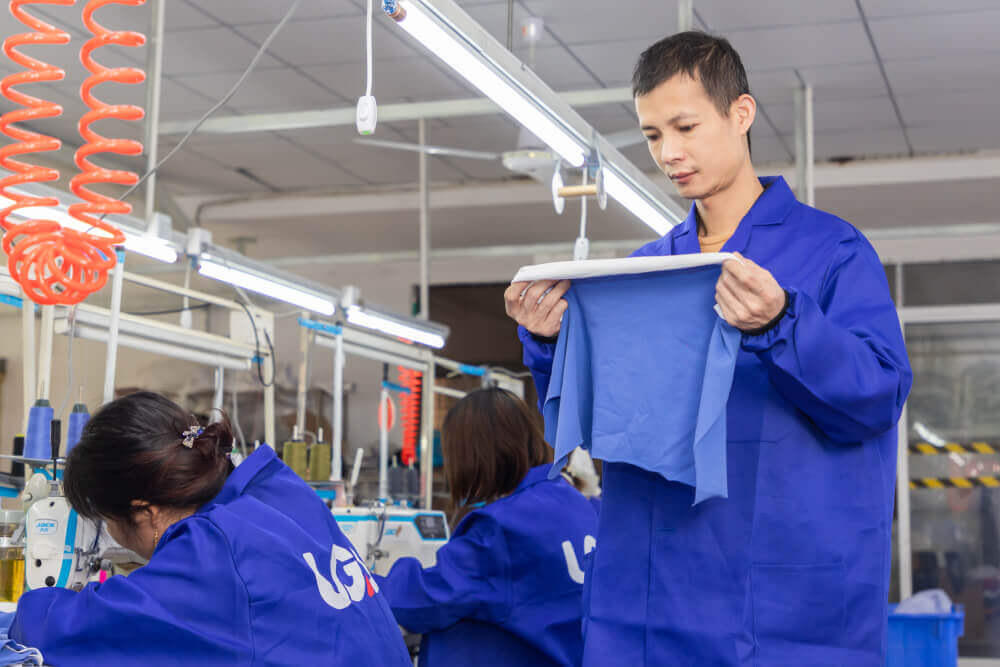
Before finally deciding on buying an activewear fabric, make sure it’s tested to ensure it went through strict quality control. The best way to do this is to request a sample. Most online retailers have now joined offline stores in offering free or low-cost samples. This will save loads of wasted time and fabric if the sample happens to be different from what is needed.
While a sample allows for the check of color, feel, shrinkage rate, and decision on the needles to use, the technical properties of the fabric will also be discovered.
Below are a few quality testing techniques to carry out on the fabrics.
- Stretch: Some fabrics come with a stretch guide on how to measure the stretch percentage. This same style can’t be used for other materials. However, the stretch rate can easily be determined by marking out 10cm. Then check how far it can be stretched against a ruler. If it extends to 15cm, then the fabric has a 50% stretch capacity in that direction.
- Fiber Content: To know if the fabric is a natural or synthetic fiber, cut off a small part to burn then check the smoke and the remains. If the fiber ignites as the flame draws near, it is natural. But if the fiber curls away from the heat and tends to melt, it is synthetic.
- Wickability: To test the wicking capability, simply spray the fabric with water to see how long it takes to dry. With wicking fabric, it’s essential to take note of the two sides. Check for the outer and inner sides to see how long they take to dry. If it’s hard to tell, you can do an informal test by wetting both sides of the weave to see how long it takes. The side that dries faster should be worn against the skin.
Fabrics Brands
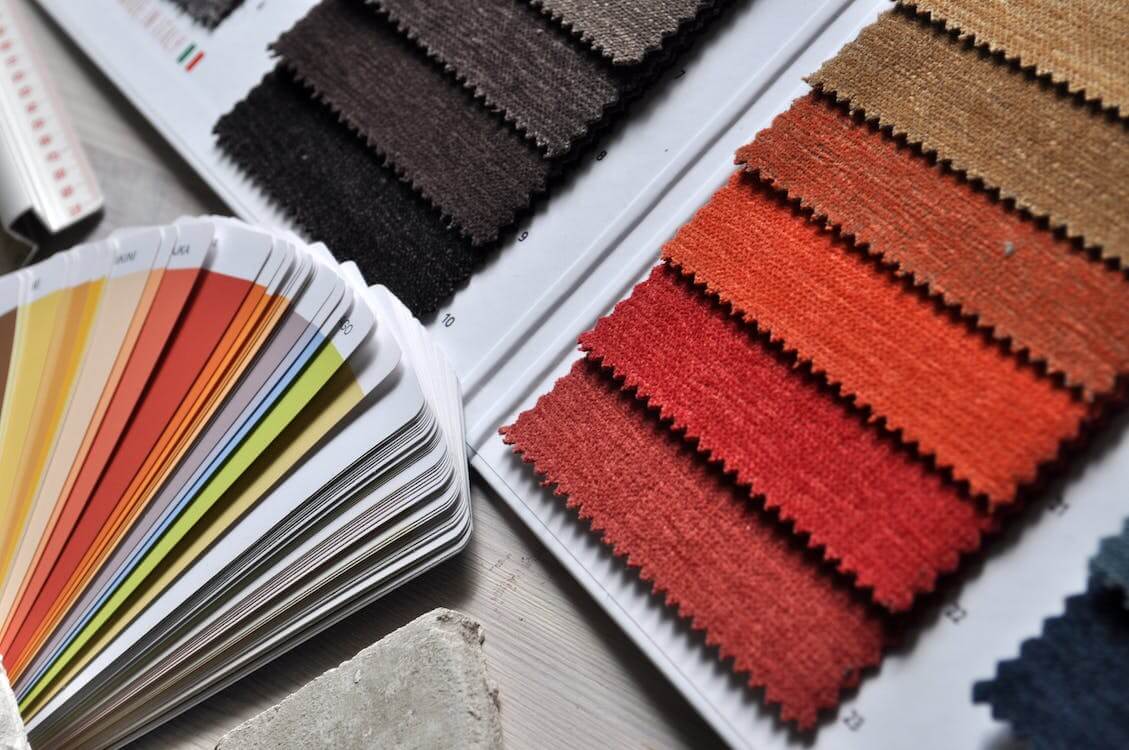
There are numerous technical brands on the market. Below are listed just some of the most popular ones.
Supplex
This is a trademark of Invista. Supplex fabrics are breathable, quick-drying, and have excellent color retention. They often come in the form of a stretch jersey, although they can also be found as thin weaves.
Tactel
Also trademarked after Invista, Tactel materials are eight times quicker to dry than cotton and they are strong, light, and soft. Oftentimes, they are used for underwear and come in the form of stretch jerseys.
Lycra
Shockingly, Lycra is also a brand trademarked under Invista and it falls under the generic “spandex” name. Extremely elastic and resilient, Lycra materials are often combined with other fibers to help keep their shape. It can also be incorporated into woven or jersey fabrics and used for activewear, underwear, swimwear, and just about any type of clothing.
Dri-Fit
This is a trademark of Nike and its primary benefit is its high evaporation rate. Dri-Fit has a little stretch capability and is often identified by its small, regular perforations. It is mostly seen in “technical” race shirts that are distributed at events,
Meryl
This is a trademark of Nylstar. Meryl is a nylon microfiber with excellent flexibility and rebound, wicking weave, and odor control. It can be found in a wide variety of materials, including stretch jerseys, knit sweaters, coated wovens, and meshes.
Conclusion
When selecting the ideal activewear fabric for working out, it’s essential to prioritize comfort and safety rather than what’s trendy. Another factor that should be highly considered is the kind of exercise.
Apart from these factors, check each fitness fabric for durability, breathability, moisture-wicking, quick-drying, stretchability, and care as they are different. Whether exercising, training or taking part in an athletic event, the sportswear fabric should be able to support top performance.
For a professional guide in selecting the best activewear fabric to skyrocket your business success, contact Uga – the best company in manufacturing all kinds of sportswear.

